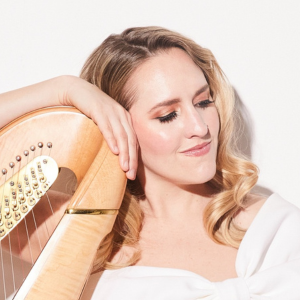—by Emily Granger

During a month long concert tour of Australia, I met a composer, fell in love, and decided to move from my home in Chicago to Sydney. I applied for a work visa, found a harp friendly apartment, and started connecting with local harpists. Not surprising for the readers of this magazine, shipping my harp was the most daunting part of the entire move.
I was originally planning to ship my harp in a wooden crate I got from a friend, before I learned the best way to ship my Style 23 was in a Lyon & Healy cardboard box. Lyon & Healy did a fantastic job on the U.S.-end of the shipment. It seems they aren’t using the wooden shipping crates much these days and literally have an entire wall lined with unused crates. These days, the harp is suspended in the middle of the box with styrofoam. The cardboard boxes are much lighter for the handlers to move, making it the safest way to ship your harp.

When I shipped my harp, no one was able to give an exact date the harp would arrive in Sydney. Everything was in limbo—my harp was somewhere en route across the Pacific with no specific date of arrival or instructions on how to pick it up. So I packed up my entire life and boarded my plane to Sydney.
A few days later, I got an email from the shipping company, ALG. “Good day, I am contacting you to let you know that your harp is on its way. It is due to arrive into Sydney off flight number 9820 at 7:15p.m. on the 19th.” Great, I’ll be there! Easy.
Before the harp arrived, I went to the customs house at the airport to declare my harp and get all the necessary paperwork to pick it up. I was unsure whether I would have to pay the 10 percent goods and service tax (GST) on the value of my harp. If I did, this was where it was going to happen. Thankfully I didn’t, and the customs agents were very friendly and helpful. I guess that’s what you get when your national pastime is surfing, minimum wage is $17.70, and healthcare is universal. I brought my airway bill from Lyon & Healy, filled out lots of forms, and got some great help from the agents. One of the agents was a clarinet major at the Sydney Conservatorium, and she did a huge favor for me. She put a note in my file that I must be present for the biosecurity inspection, and no one was allowed to inspect the harp unless I was present. Australia has very strict biosecurity laws and items are quarantined until inspected. The concern is imported wood and natural materials (e.g. gut strings) could be infested. She gave me the “If it’s infested spiel,” but I stopped listening after she mentioned extreme heat treatment and chemical sprays.
I arrived at the airport at the appointed time, but my harp wasn’t there. The inspector and warehouse knew nothing about my harp. I thought I could just show up at the airport, they would inspect my harp, clear it, and let me take it home. Not the case. After hours of phone calls to various agencies, each telling me the other agency had no idea what it was talking about and they were all idiots, I was able to set up the second inspection. I shelled out a few hundred dollars more and we were in business! They called this “hiring a customs broker.”
We arrived at the warehouse a few days later for the inspection. This time I saw my harp! The box was in the middle of a yellow square painted on the ground, and the biosecurity agent made sure I stood behind the security line the entire time and I did not touch my harp. The agent and the warehouse staff had no idea how to open the box and struggled to get the harp out. I stood there, heart pounding, biting my tongue, until they decided to tip the box on its side and try a different angle. I couldn’t handle it anymore, “You can’t get it out that way! See the ‘this side up’ sign?” That was met with, “Ma’am, stay behind the yellow line,” as I was intuitively leaping to the rescue of my harp. The inspectors continued to struggle, but finally decided to follow to my instructions and successfully removed the harp. The agent took one quick glance at the harp and zipped it back up. He stepped aside to make a call and left without saying a word. The warehouse manager told me my harp was good to go. I called an Uber XL, took my harp home, and declared I’m never moving overseas again.
Total shipping cost: $2,112 USD. •






